Today, I am reviewing another tenor saxophone mouthpiece from a fairly new company called SYOS mouthpieces in France. This company hit the saxophone mouthpiece scene not too long ago and immediately caught the world’s attention by producing these really bright colored 3D printed saxophone mouthpieces made of plastic. I remember thinking they were strange looking and looked like something one of my fourth grade saxophone students might have walked into their sax lesson with.
I must admit, that at first, I was very skeptical. First, these bright colored sax mouthpieces looked like Legos to me. Like something I might give my nephew, who just turned one year old, as a toy he could play with. Secondly, they look like plastic. I have been reviewing mouthpieces for about 14 years now and if it’s one thing I know, it’s that sax players like their sax mouthpieces made of costly materials like hard rubber, gold plated brass, stainless steel, ebony, silver plated brass, sterling silver, WWII bombshell casing brass and anything exotic that they can claim makes their mouthpieces special, more resonant, metaphysically angelic and godlike. Sax players do not buy saxophone mouthpieces made out of plastic. No way! I thought that this company was doomed to fail even as they got out of the gate.
Tivon Pennicott on his SYOS Tivon Pennicott Signature Sax Mouthpiece
But then, I started seeing some really great sax players playing these SYOS saxophone mouthpieces on Youtube. “What was going on? Why are these great players playing on a plastic mouthpiece? And why are these mouthpiece bright green, bright yellow, bright red, bright purple, bright orange and even…..Easter egg pastel purple (you know that color, just imagine a purple Easter egg…..) How can this be happening?!”
I was stubborn! I fought off the temptation for a year at least. I finally threw in the towel while watching a video of Chad Lefkowitz-Brown playing on his SYOS tenor sax mouthpiece. Chad just sounded too good on this plastic sax mouthpiece! I contacted SYOS to see if I could review a few of these mouthpieces………
SYOS Tivon Pennicott Signature Tenor Saxophone Mouthpiece
SYOS was pretty quick to respond and asked me which sax mouthpieces I would like to review. I didn’t want to go down the custom sax mouthpiece road so I told them I would be interested in trying their Chad LB (short for Lefkowitz-Brown) and Tivon Pennicott models ( I really like Chad and Tivon’s playing…….) They also threw in a Godwin Louis alto sax mouthpiece to try out. I had never heard of Godwin Louis but I was willing to try out his alto mouthpiece.
The Tivon Pennicott tenor sax mouthpiece is bright yellow and is an 8 tip opening. It usually comes as a 9 tip opening, as that is what Tivon Pennicott plays, but I felt that a 9 tip opening was a bit too large for my tastes so I asked for an 8. The Chad LB tenor sax mouthpiece I received is an 8* tip opening and the Godwin Louis alto saxophone mouthpiece is a 6* tip opening.
SYOS Tivon Pennicott Signature Tenor Saxophone Mouthpiece
Before we get to the playing of the SYOS Tivon Pennicott tenor sax mouthpiece, let me give you a few tidbits of info from the SYOS website on these sax mouthpieces.
First of all, you have two choices when you visit the SYOS website and order a sax mouthpiece. You can order a “SYOS Signature Mouthpiece” which is basically what the mouthpiece that the player whose name is on the mouthpiece plays.
If, however, you want to be unique and are on a quest to find your own unique sound, you might want to pick the second choice of ordering a custom mouthpiece from SYOS which I have to say looks like a pretty cool process. Here’s what you do on the SYOS website:
- First, you choose what saxophone you play. Soprano, Alto, Tenor or Bari Sax
- Second, you choose whether you are a beginner, intermediate or professional sax player
- Third, you choose what type of music you play (you can pick more than one category)
- Fourth, this is the coolest part, you choose your sound preferences. There is a slider for tone that goes from very dark to very bright. You can choose where in that tone spectrum you feel you would like to be. There is also a slider to choose how powerful you want to be. The slider goes from soft to powerful. Now here’s the coolest part because as you are reading this you might be confused about how you might choose what you want or you might be confused about what your preferences are. SYOS gives you a bunch of examples with sound clips! How cool is that? The following list of player are listed and rated for tone and power. Ben Webster, Chris Potter, Coleman Hawkins, Dexter Gordon, Joe Henderson, Michael Brecker, Sonny Rollins, Stan Getz and Wayne Shorter. (Can I just point out at this point, how awesome Chris Potter must feel about being included in this list!)
- You click “Submit” and wait by your mailbox for your custom mouthpiece that will answer all your dreams to be delivered.
SYOS Tivon Pennicott Signature Tenor Saxophone Mouthpiece
Here is a quote from the SYOS mouthpiece website on the specifics of ordering a custom mouthpiece from SYOS:
Syos is the first custom mouthpiece maker to use a high-tech process to design its products. It is different from all the other brands who only make standard series of mouthpiece models. Syos gives you the possibility to have your custom mouthpiece created on-demand according to your needs and preferences.
- You are helped by an acoustic expert who will help guide you in your sound research.
- You can test the mouthpiece(s) at home or in rehearsal without having to go in to a shop.
- You can try your custom mouthpiece for 30 days, with the possibility of requesting adjustments on its shape to modify the sound, to get it even closer to your need.
Simply fill out the customization form on our online shop: you tell us about your saxophone level, the music you like, your favorite sound, which kind of sound you are looking for (bright? Dark? Powerful? Warm…) and we design your mouthpiece based on that. With Syos, satisfaction is guaranteed. If you have any question, we can answer you on the mouthpiece chat, or you can give us a call: we will help you define your requirements.
Here is a few comments about the material SYOS mouthpieces are made from in case you are curious:
We use ABS plastic to craft our mouthpieces: this material allows us to get the highest degree of precision, with an improved resistance and durability. And you can get that in 18 colors to build a perfect style on stage!
The plastic we use to make Syos mouthpieces has been certified non-toxic in laboratory (EN 71 and CE 1907/2006 standards). In fact, the same kind of plastic is used to make toys for children, which can be put in mouth without any risks. At the opposite, with the “ebonite” plastic, some sulfuric acid releases are observed when the mouthpiece is old, which gives it a yellow-green color.
And finally, here is a quote about the manufacturing process and how the minute details affect your tone which I found interesting:
For wind instruments, it’s the internal geometry of the bore that gives all the acoustic properties. We work at 1/100th millimeter to adjust the shape and the length of the baffle, the chamber section and size, the tip opening, the facing length… We study and compute the effect of all these parameters on the sound, to predict the timbre of each combination of them.
SYOS Tivon Pennicott Signature Tenor Saxophone Mouthpiece
Ok, so let’s get to the sax mouthpieces I received. The first thing that surprised me when I opened the box was that all three sax mouthpieces were in a “Syos” drawstring bag just laying next to each other without any cushioning, wrapping, bubble wrap, velvet bags or anything like that. They were just hanging out in there all loose and free. Three mouthpieces together. That surprised me and made me a bit nervous about these mouthpieces. What if when they were coming from France, the box fell off a shelf or was thrown into the plane, thrown out of the plane, fell off a conveyor belt, etc…… What if these mouthpieces had just been bumping and grinding against each other for a week straight!
I checked the mouthpieces each very closely and saw no signs of damage, nicks or abrasions. They looked good to go. Maybe I am being a bit paranoid. It is just plastic, but it still seems like they should be separated by something to me. Obviously, the people at SYOS aren’t worried about them being shipped like this so they must be confident they would be all right.
The Tivon Pennicott tenor saxophone mouthpiece felt really light as you would expect a plastic mouthpiece to feel. The table had some texture to it that I could feel with my fingers and you can see in the photo above. Whatever process they use to make these sax mouthpieces does leave some texture marks on the mouthpiece. You can see fine lines going across the table and fine lines going down the baffle as if the machine that cut the mouthpieces left these lines on the plastic.
The mouthpiece looks pretty well made. The table, rails look well made and even. The curve of the tip is slightly off from the curve of my reeds though. I didn’t notice this on the Chad LB SYOS mouthpiece and when I compare both of these mouthpieces side by side it looks like the Tivon Pennicott tip is slightly higher at the top of the arch of the tip shape. This really isn’t an issue playing wise as the reeds I used sealed well and played great on this mouthpiece.
The baffle is what I would consider a medium height baffle that heads straight down towards the rear of the chamber. As the baffle enters the chamber, it has 8 parallel raised lines crossing the baffle as it angles through the chamber. I’m not sure what these lines are for or what purpose they have. I’ll have to ask SYOS about these when they get back from vacation.
I would say that the chamber is a medium small chamber. From the bore end of the mouthpiece, the chamber looks smaller than a typical Otto Link sized chamber. When you look from the front of the mouthpiece, it is pretty easy to see how the baffle cuts through the chamber to make it even smaller. SYOS describes the Tivon Pennicott model as a small chamber although I have seen smaller chambers on mouthpieces like a Selmer Soloist tenor mouthpieces and a few other tenor sax mouthpieces.
The side walls are scooped out nicely. Everything looks neat, tidy and smooth. There is a bit of a seam that is on the top of the mouthpiece at the shank. It’s closed up and seems solid but there is a line that runs an inch or two that seems like it might be part of the manufacturing process. There is also a nicely engraved S on the top of the sax mouthpiece and a signature on the side of the saxophone mouthpiece which is Tivon’s signature.
SYOS Tivon Pennicott Signature Tenor Saxophone Mouthpiece with Ligature
The SYOS Tivon Pennicott tenor sax mouthpiece comes with a SYOS ligature which fits the mouthpiece nicely when it has a reed on it. I was a bit skeptical of this ligature but it actually holds the reed on the mouthpiece pretty firmly when the ligature is slid all the way down and is tight around the reed.
I will warn you that the ligature can move when you have to adjust the mouthpiece on the cork so I quickly realized that if I need to adjust the sax mouthpiece for tuning, that it was best to grab it around the shank of the mouthpiece to move it on the cork.
The first sax reed I tried on the SYOS Tivon Pennicott tenor sax mouthpiece played surprisingly well and is the reed I used for the sound clip. It was a used Rigotti Gold 3 Light reed. It’s pretty rare that I put a random used reed on a mouthpiece and it just plays great but the Rigotti 3 Light felt great on this mouthpiece. I had the same experience on the Chad LB model when I reviewed that mouthpiece.
SYOS Tivon Pennicott Signature Tenor Saxophone Mouthpiece
The tone of the SYOS Tivon Pennicott signature tenor sax mouthpiece was even throughout the range of the horn and the intonation was excellent. It had a darker tone than the Chad LB model which is no surprise as the baffle is much lower. The tone was darker, warmer and had a sweetness to it that I really liked. The smaller chamber gave the tone a direct focus in my opinion which is rare as usually darker mouthpieces are much more spread in their tone.
On the SYOS website, it doesn’t give the scale number for the Tivon Pennicott mouthpiece that I can see but it does have a picture of the scales and the Tivon Pennicott mouthpiece looks like it is rated at about a 2.4 (out of 10) for brightness and a 5.5 (out of 10) for power. When pushed the Tivon could get louder and more powerful but not as loud and powerful as the Chad LB model. I don’t think I would take this model of tenor mouthpieces for a loud R&B gig or rock saxophone solo where you need the brightness to cut through the mix of loud electronic instruments but the Tivon Pennicott mouthpiece would be a great choice for a jazz gig and the lush warm full tone would be great on that type of music.
I don’t want to say that the Tivon Pennicott model mouthpiece can’t be used on those louder Top 40 type of gigs because it does have some nice volume but it’s tendency to more lean to the darker side of a tenor tone might make it harder to cut through the mix on those loud gigs. For playing jazz and ballads, I personally prefer the tone of the Tivone Pennicott mouthpiece over the Chad LB mouthpieces just because of the darker tone and warmth.
The altissimo range was easy to play on the Tivon Pennicott model as well. I found it to be darker and warmer in the altissimo range than the Chad LB model was. The notes up in that range just seems to have less of a bright edge to them which was nice.
SYOS Tivon Pennicott Signature Tenor Saxophone Mouthpiece
If you like the sound and look of the Tivon Pennicott signature tenor sax mouthpiece by SYOS, you can find them at the SYOS website. (Neffmusic also gets a small commission from each sale when you use this link which helps support this website).
The SYOS website has a ton of artists and signature models available so if the Tivon Pennicott model isn’t your cup of tea, there are a ton of other sax mouthpieces to choose from including the Chad LB that I reviewed earlier this month as well as many other signature models. Or, like I wrote above, you can be courageous and go for a custom sax mouthpiece made specifically for you. The amazing thing is that SYOS has a 30 day return policy which is unheard of in the sax mouthpiece industry.
The other great thing about the SYOS saxophone mouthpieces is the price point. As of today, the signature model sax mouthpieces are at about 185 USD, which in my mind is a great price for a sax mouthpiece that plays this well. The custom model sax mouthpieces are 277 USD, which is still a great deal for a custom sax mouthpiece that is made to your preferences. From what I read on the SYOS website, you can send your custom sax mouthpiece back for adjustments if you want tweaks made to it also which is amazing.
If you have played or end up playing a SYOS Tivon Pennicott Signature Tenor Saxophone Mouthpiece or have any other thoughts or comments about this review, I would love to hear what you think in the comments below. Thanks, Steve
SYOS Tivon Pennicott Signature Tenor Saxophone Mouthpiece-Rigotti Gold 3 Light Reed-No Reverb Added
SYOS Tivon Pennicott Signature Tenor Saxophone Mouthpiece-Rigotti Gold 3 Light Reed-Slight Reverb Added

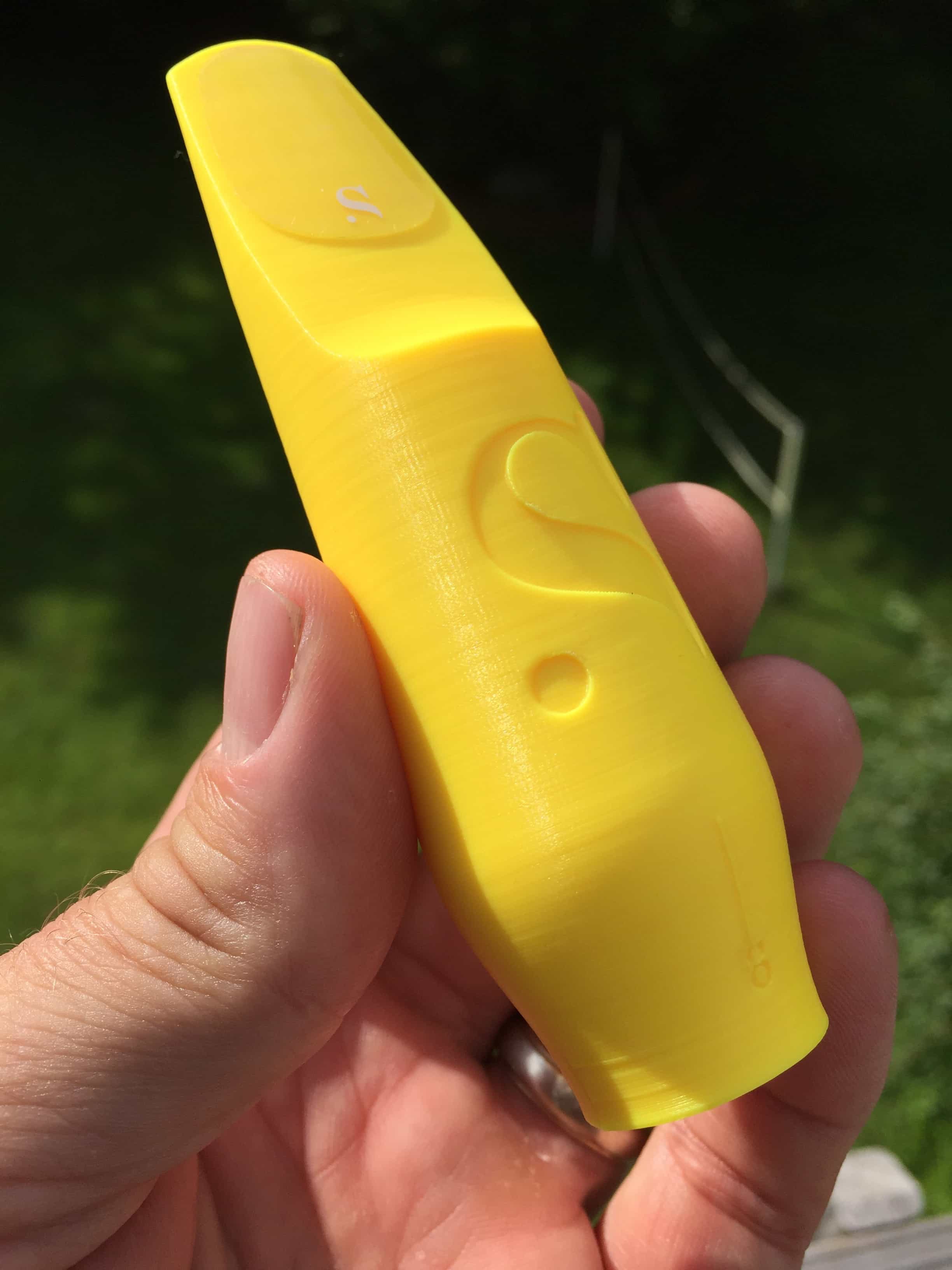
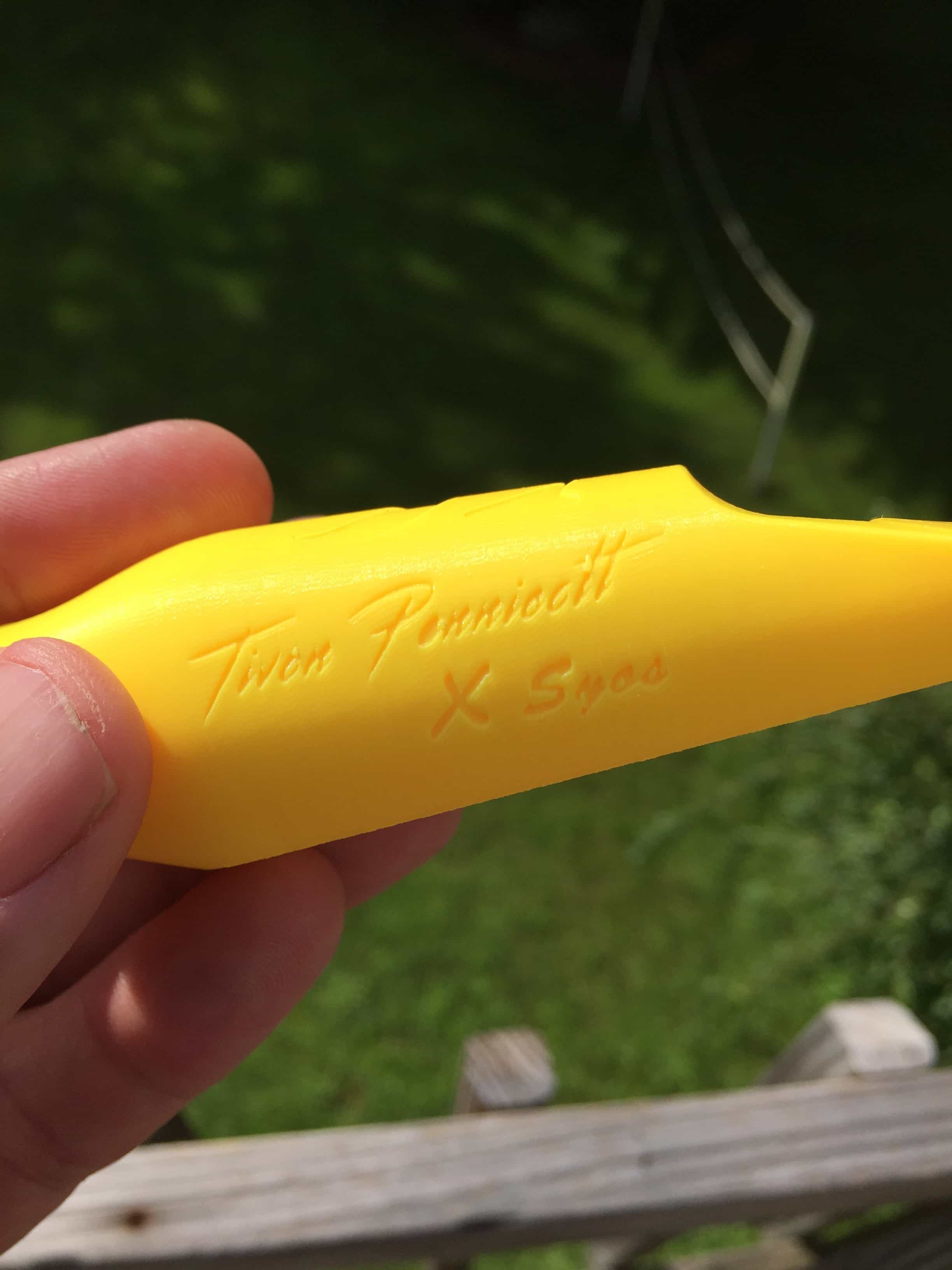
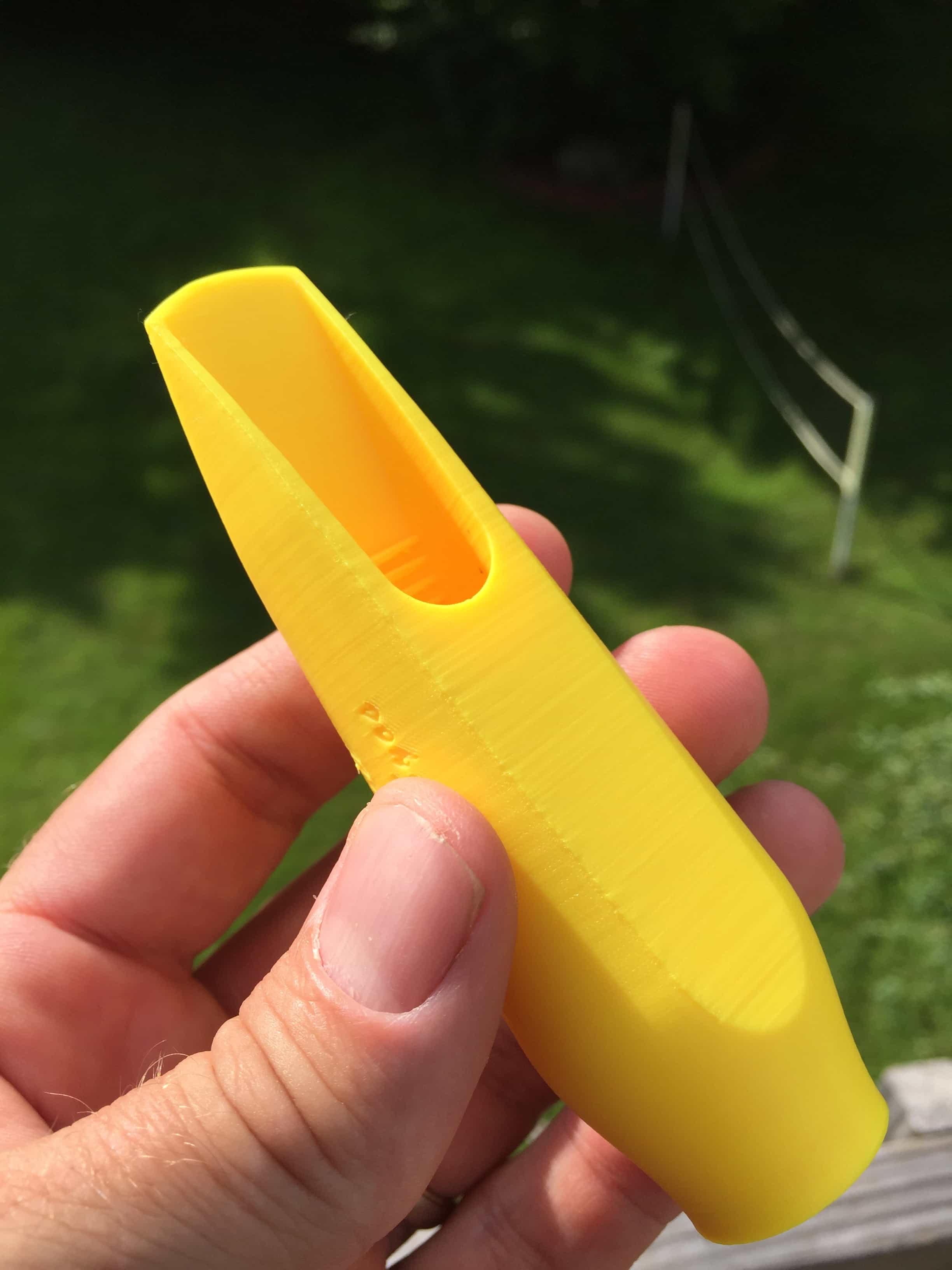
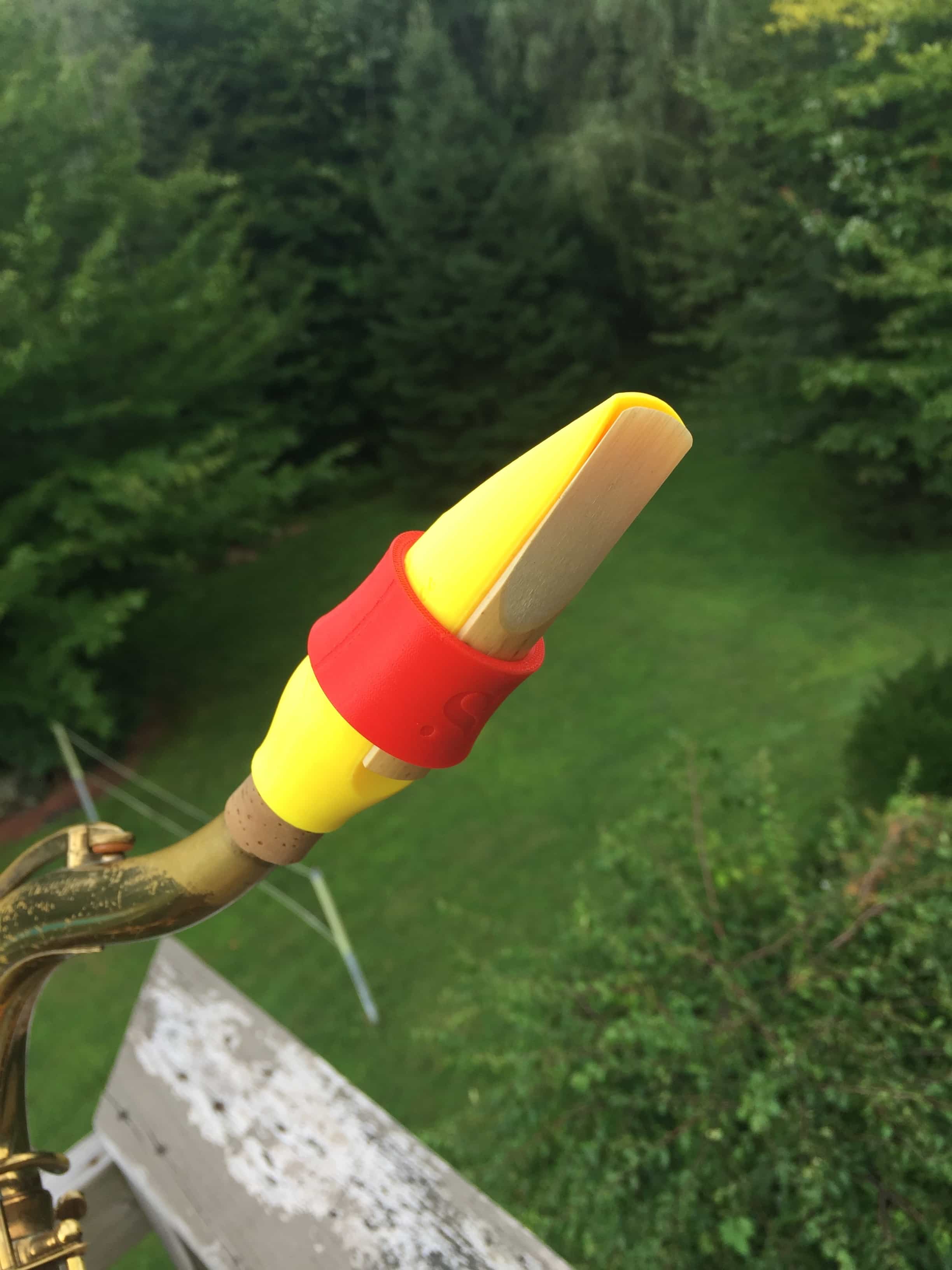
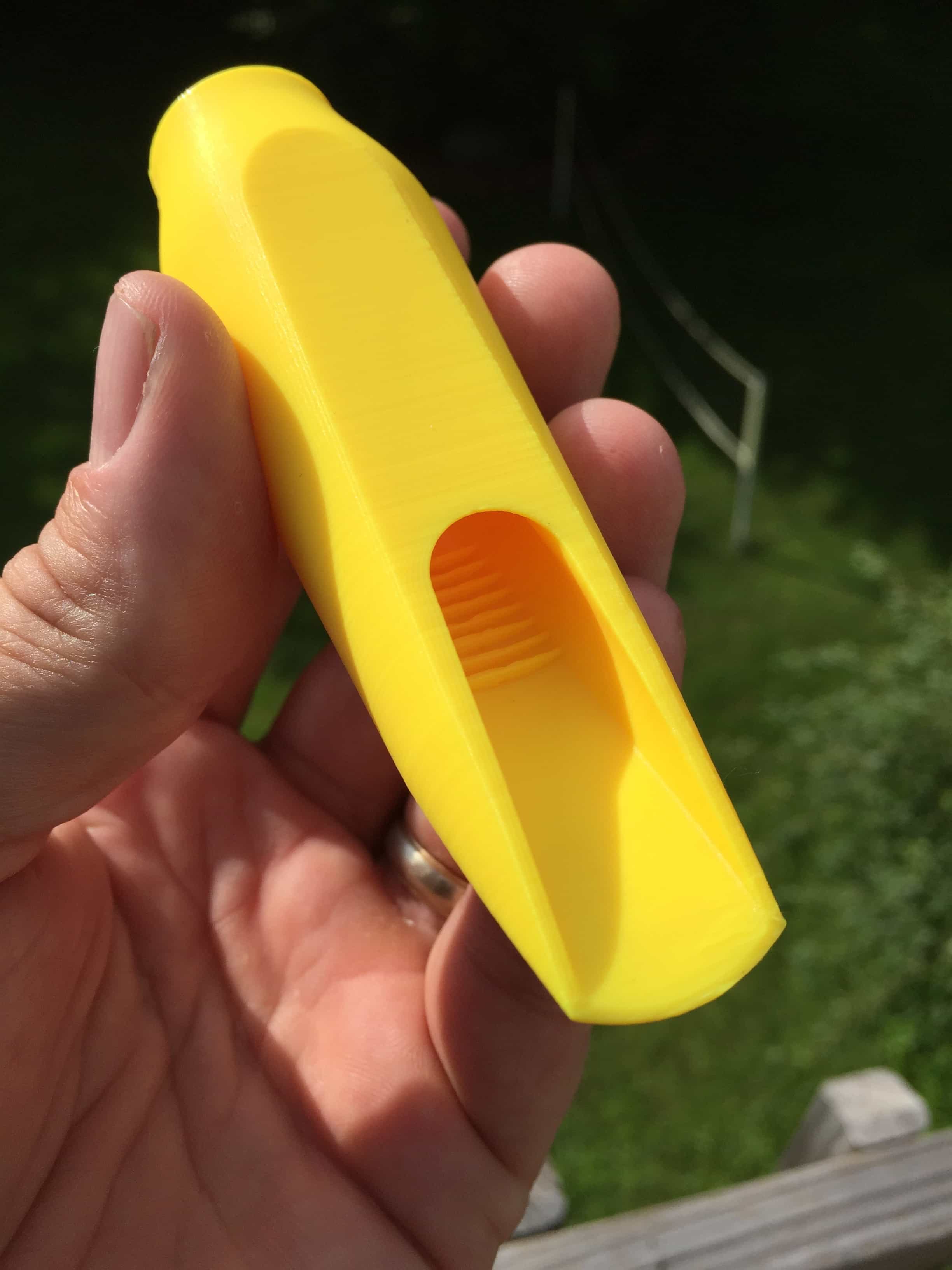

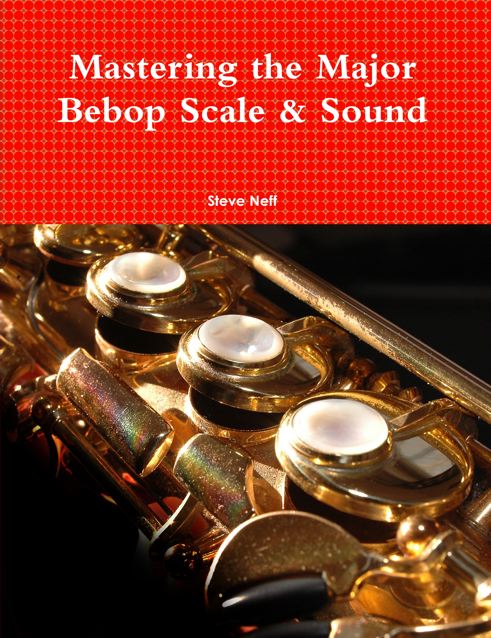


Thanks for your review Steve! Just a heads up, the parallel lines in the mouthpiece are apparently supposed to increase power and projection with limited effect on the brightness of tone. I think it’s similar to Theo Wanne’s shark gill baffles.
Personally, I have been really impressed with SYOS’s customer service. I am in the process of making a custom baritone and tenor piece with them and they really go the extra mile to be sure that your MP is dialed in exactly how you want it.
I’ve also been impressed with their mouthpieces. I picked up the Mike Wilbur and Wenzel McGowen pieces. Both are a great value for at under $200.00. SYOS may not be the best mouthpieces on the market, but for a fair price you are either going to get a great mouthpiece or a custom one that plays just the way you like.
I personally wrote them off for their looks for a long time, but I’m really glad I gave them a chance.
“…the reeds I used sealed well and played great on this mouthpiece.”
My experience was that no reeds would seal on my mouthpiece and when I contacted them about it I was told, “they determined that wasn’t necessary!” Needless to say, I don’t use the mouthpiece!
Bill, I have heard people say this before and believe it is nonsense. Mouthpieces that don’t seal play like crap, are inconsistent and unreliable in my opinion. Every mouthpiece I have owned that has caused me problems has had sealing issues with reeds. I would demand a new mouthpiece or refund. Steve
Love the reviews, thanks Steve! I have the Chab LB model from SYOS and am still getting used to it. I *really* like how easy it is to play, how in tune it is, and do see it as a contender for “#1” status. When I hear clips of Chad playing it, all I can think is: “I want to sound just like that!” But, for my own “anatomical predispositions,” I do find it to be a bit bright if I’m not careful in certain situations (jazz ballad…). So, now I’m wondering if I need to order the Pennicott and give it a whirl! My question: how do you compare the 2 in terms of ease of play? Would you say the free-blowing vs. resistant characteristics are the same? As someone who has only recently begun experimenting with different mouthpieces after many years on the same setup, I’d also love any thoughts you have on the idea of free blowing vs resistant mouthpieces generally. Thanks again!
Darren, I wouldn’t say the Pennicott is any more resistant or free blowing than the Chad LB mouthpiece. The resistance feels the same. There is a difference in the air though because the Chad LB has that higher baffle. You blow into it and it just plays kind of effortlessly with little air. The Pennicott model needs a bit more air and support to get going but that is just a matter of getting used to it. Once you get used to it it plays very freely. If you are interested in mine, let me know as I will probably be selling it. Thanks, Steve
What is sealing and how can we test for it
Andrew, Here is a video I found explaining it. I don’t lick my hand because I think that is gross. It’s not needed. You don’t want to do it too much either. The only time I do the suction test is when I try a new mouthpiece to make sure it is getting suction and if I start having playing problems like squeaking, notes not playing, stuffy or delayed response, ect…..Once I know a mouthpiece gets suction and has a well made table and rails I hardly ever do it unless those playing issues arise. You don’t want to test it with a reed you used on another mouthpiece either. Used reeds from another mouthpiece are much more likely to fail because the cane already formed to the facing curve and table of that other mouthpiece. Hope this helps, Steve
https://www.youtube.com/watch?v=O0gl9S9Z8uc
You put the table of the mouthpiece on a flat piece of glass or plastic and slide a thin piece of metal between and see if the metal stops even on both sides of the mouthpieces table
I have 5 Syos tenor mouthpieces and one rail to the tip was very uneven and would not seal. I used a Reed Geek facing tool to measure and to show them how off it was. They apologized and sent me a new one, which played much better. The other was not playable. They did tell me that they do not hand work at all on the mouthpiece because it does not make a difference and it takes away from they perfect measurements. But the rails to the tip have to be even and seal the reed.
I have also tried 2 of these mouthpieces. And alto and bari model and neither of these mouthpieces sealed. Both were unplayable.
Lovely playing example. Good review; I guess the rest is up to you. Might try Baritone mouthpiece
Lovely playing example. Good review!